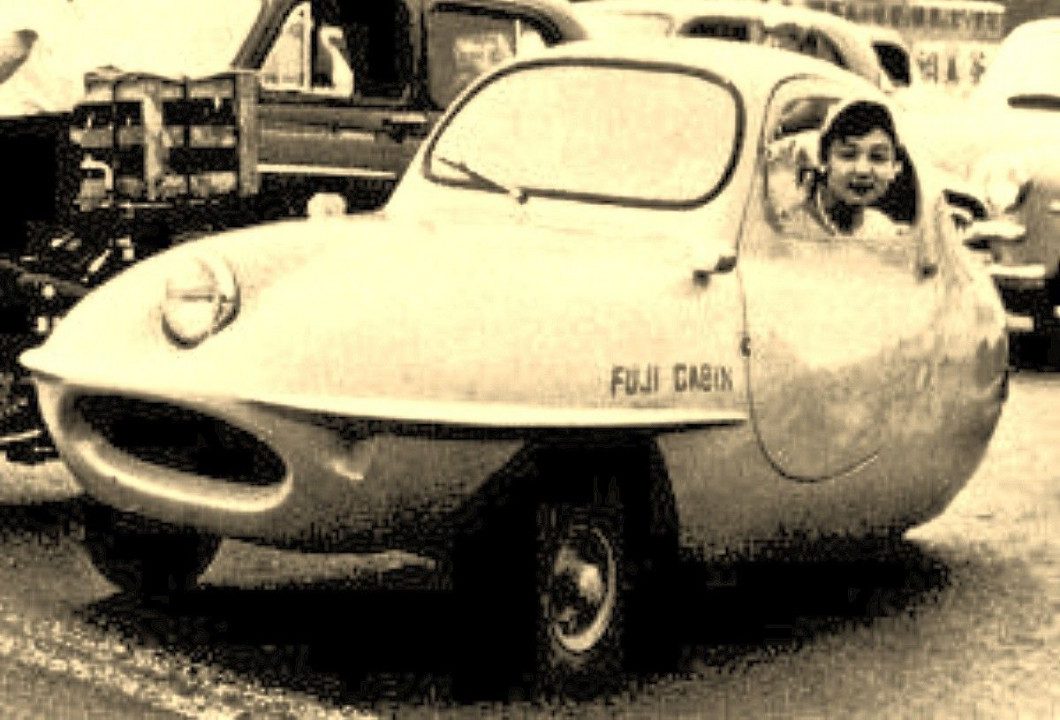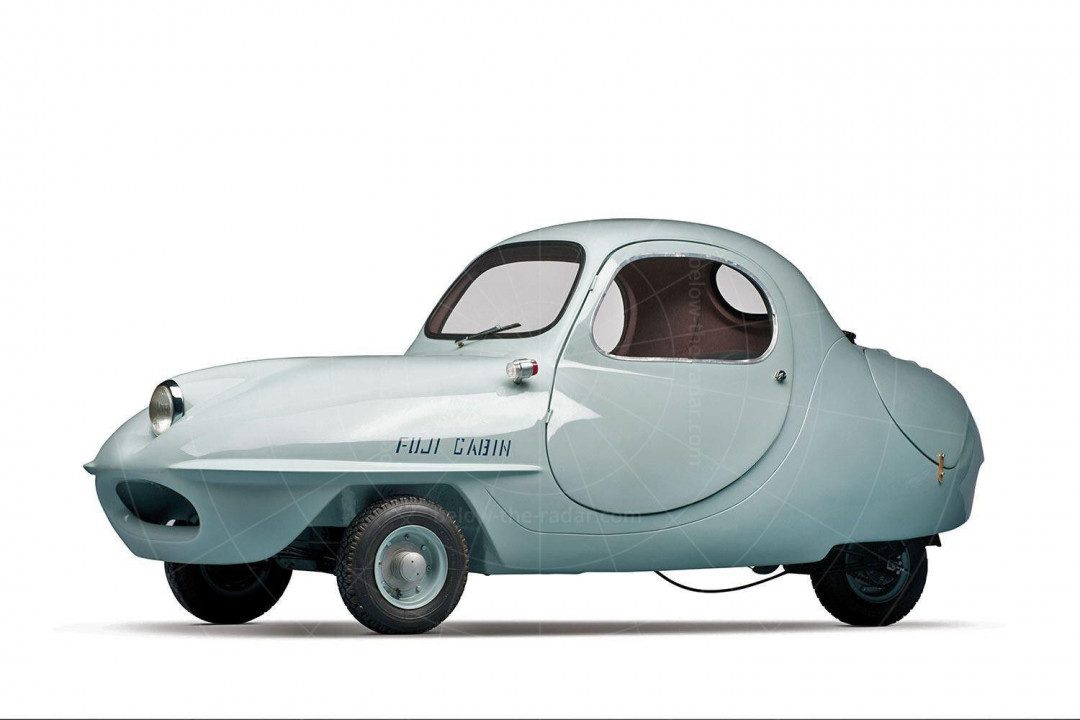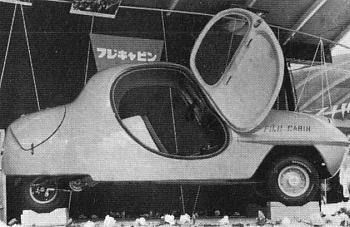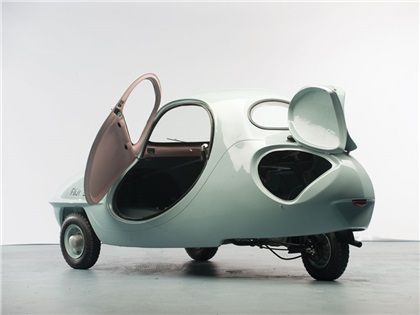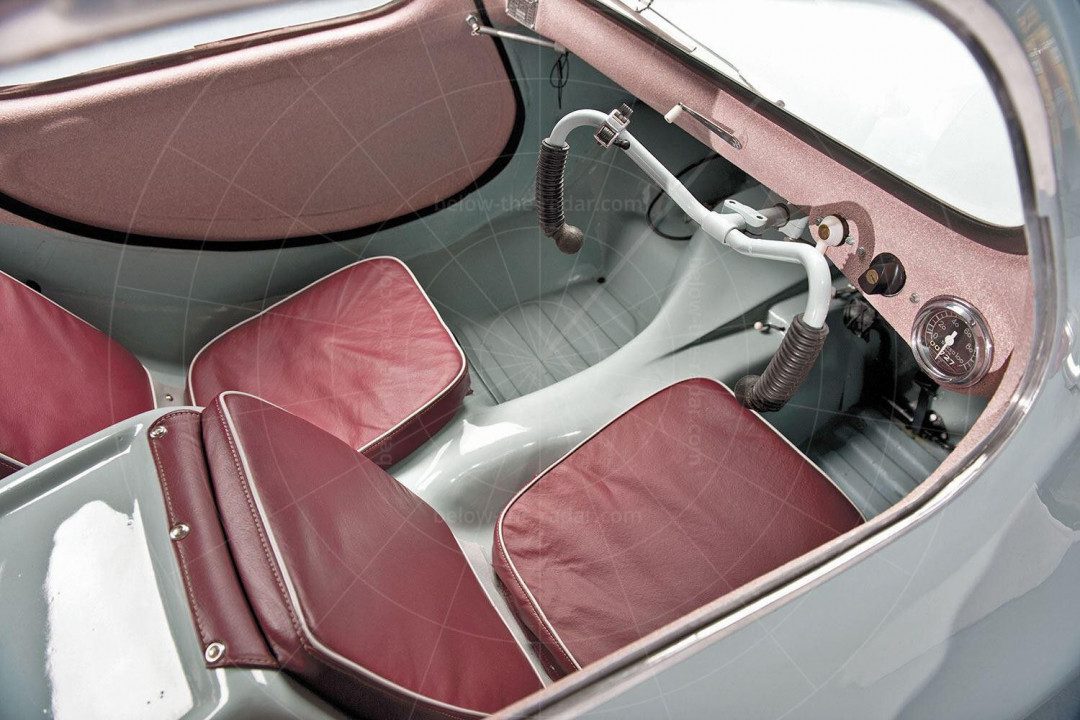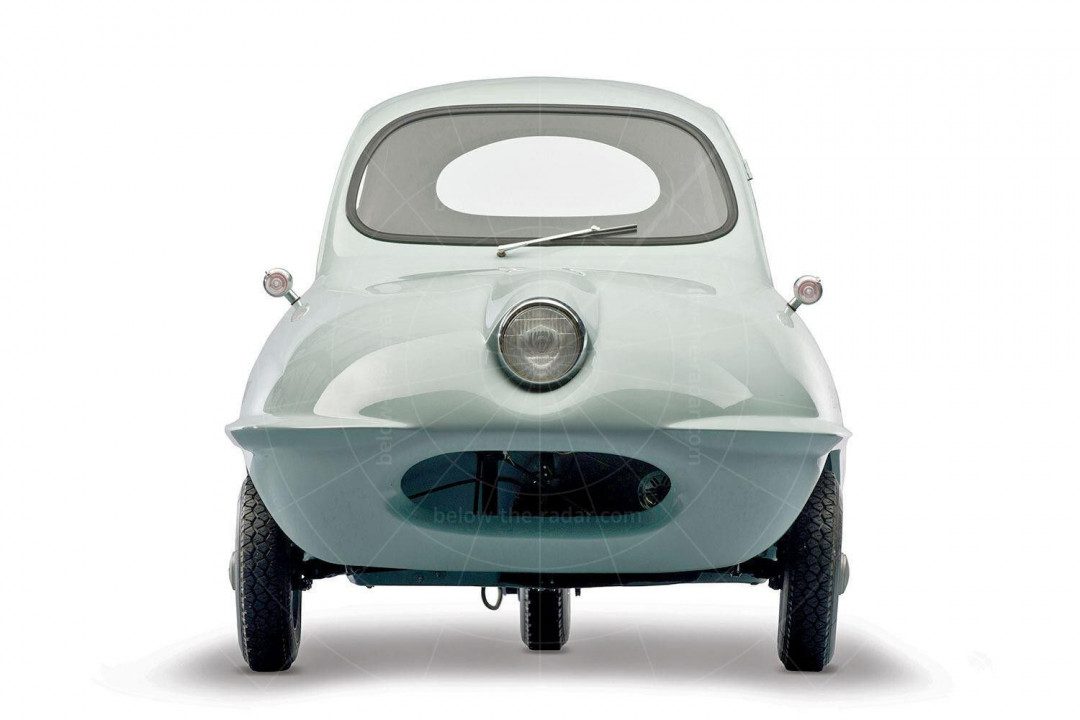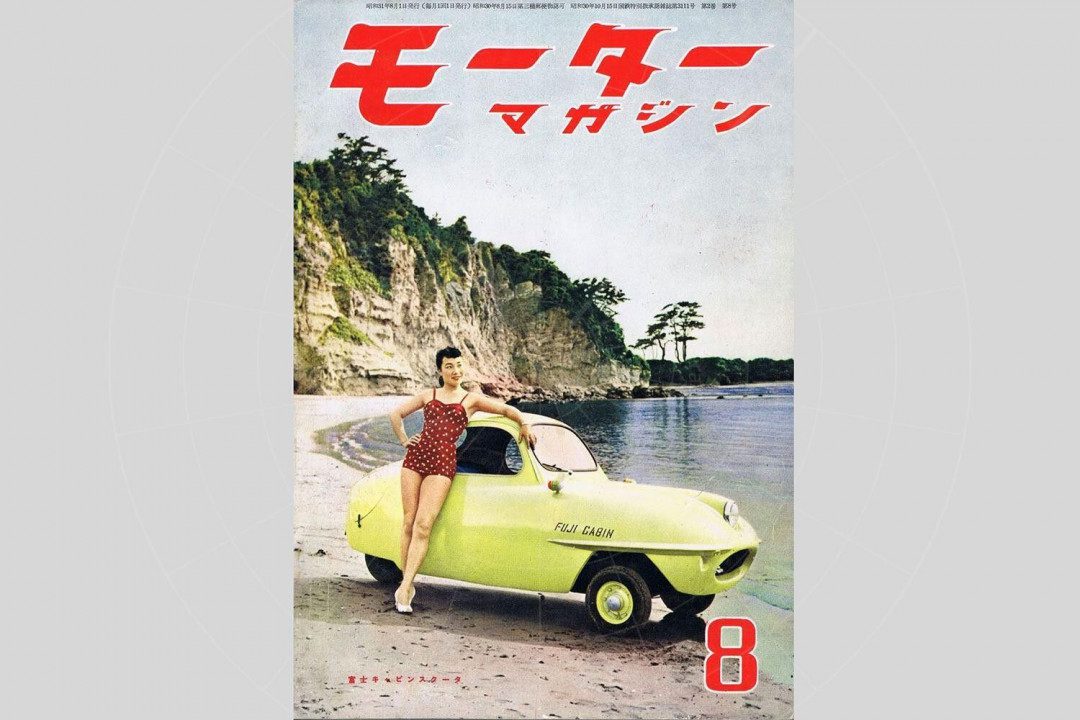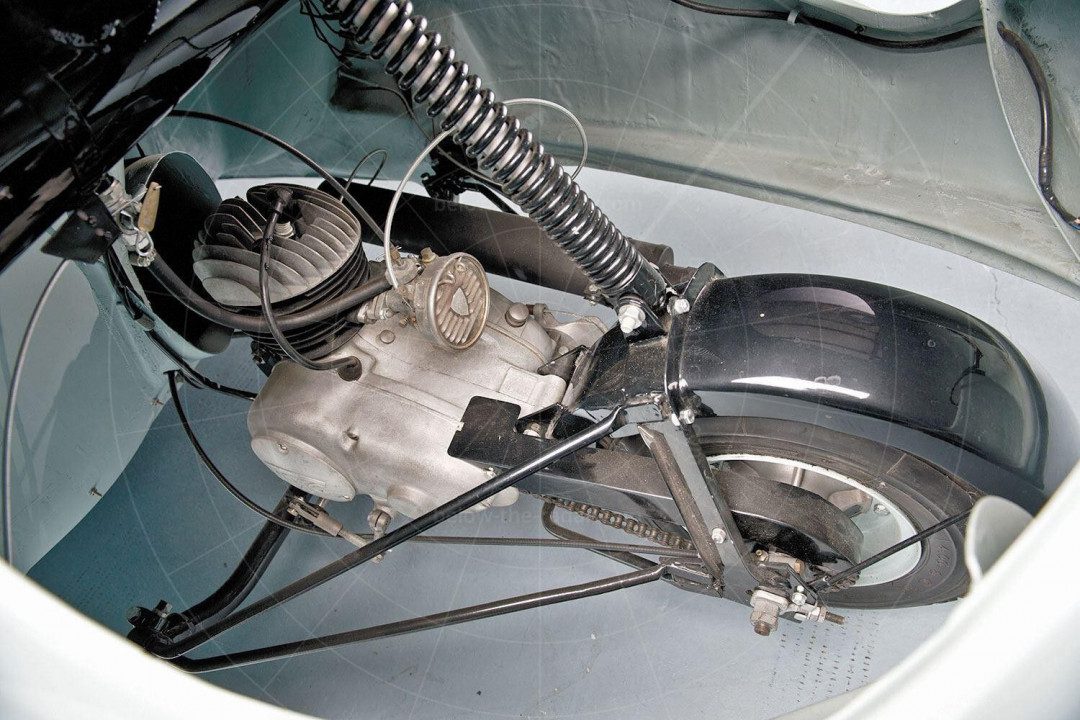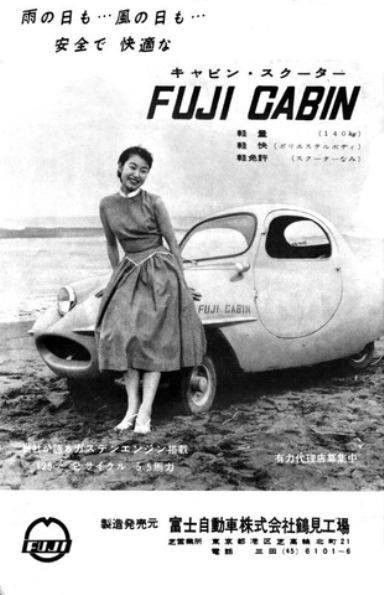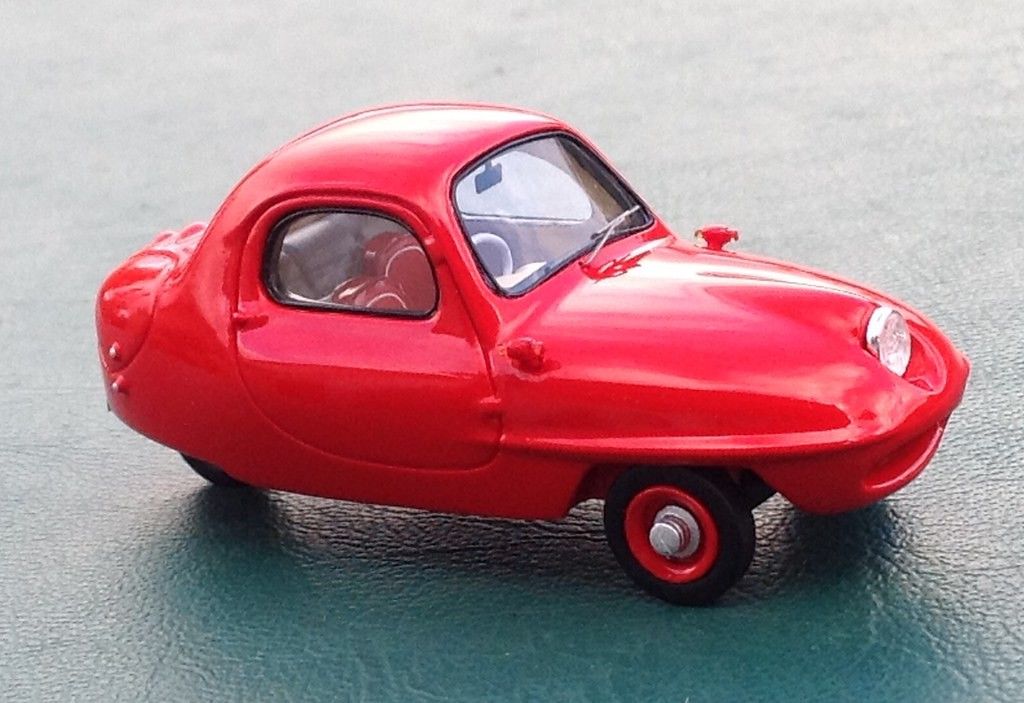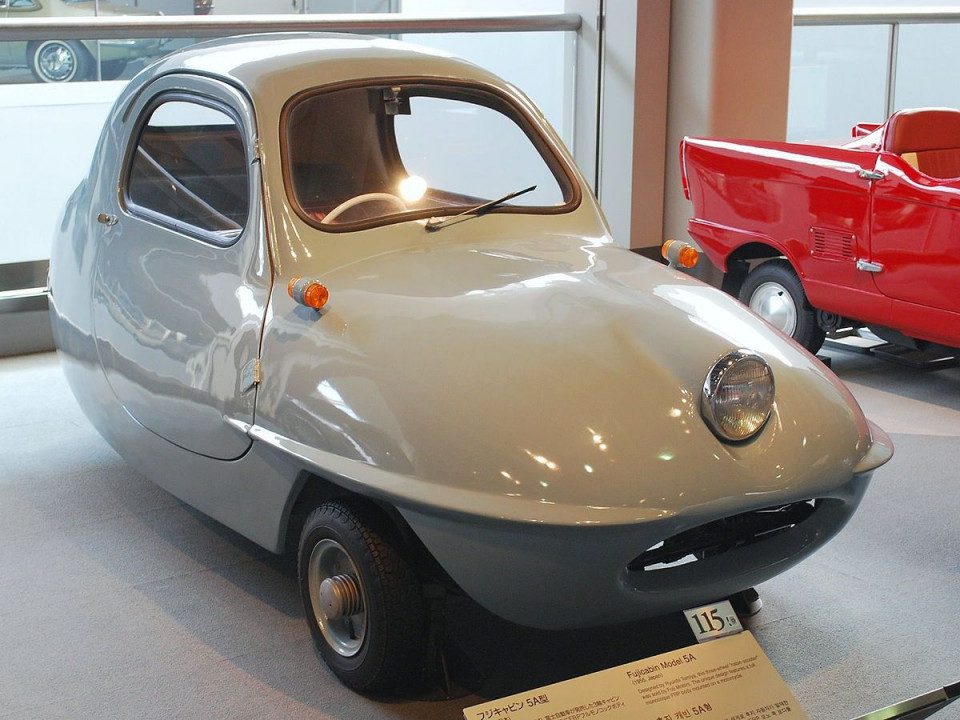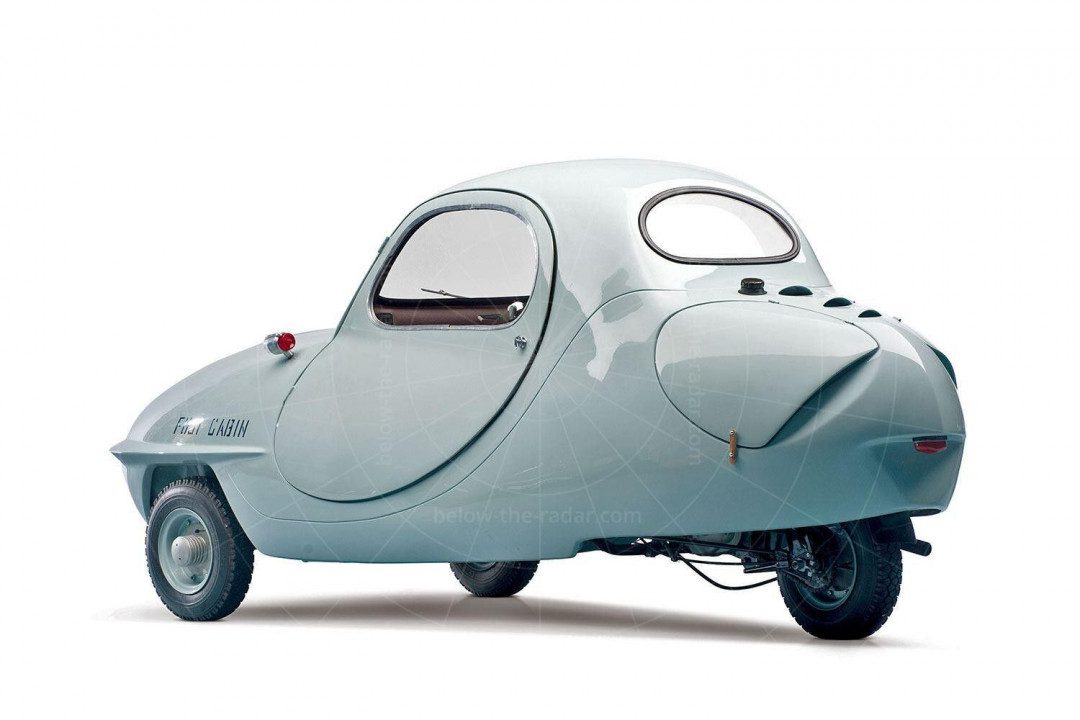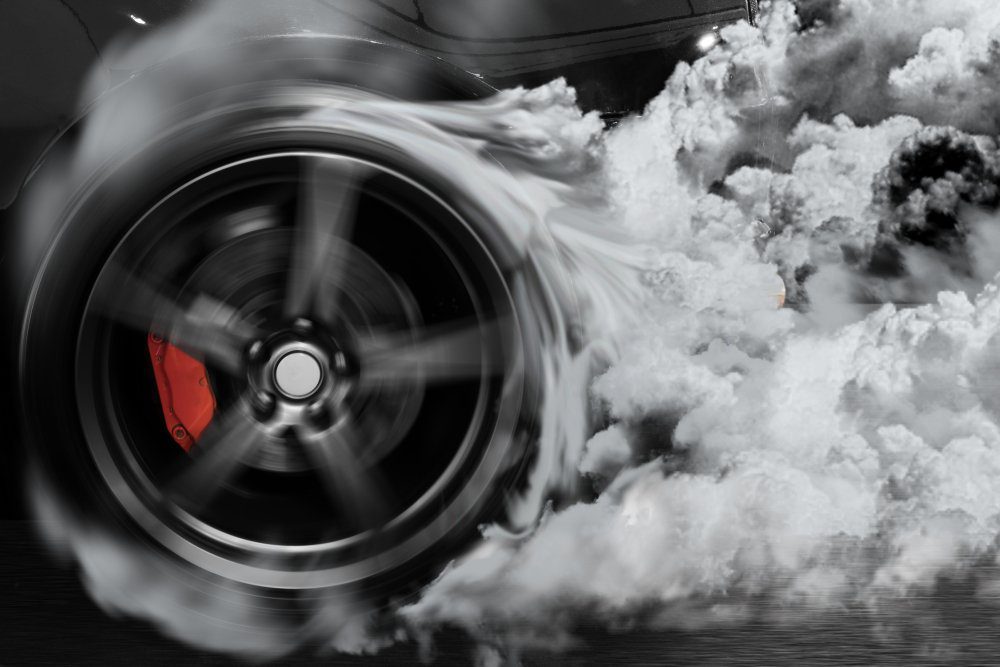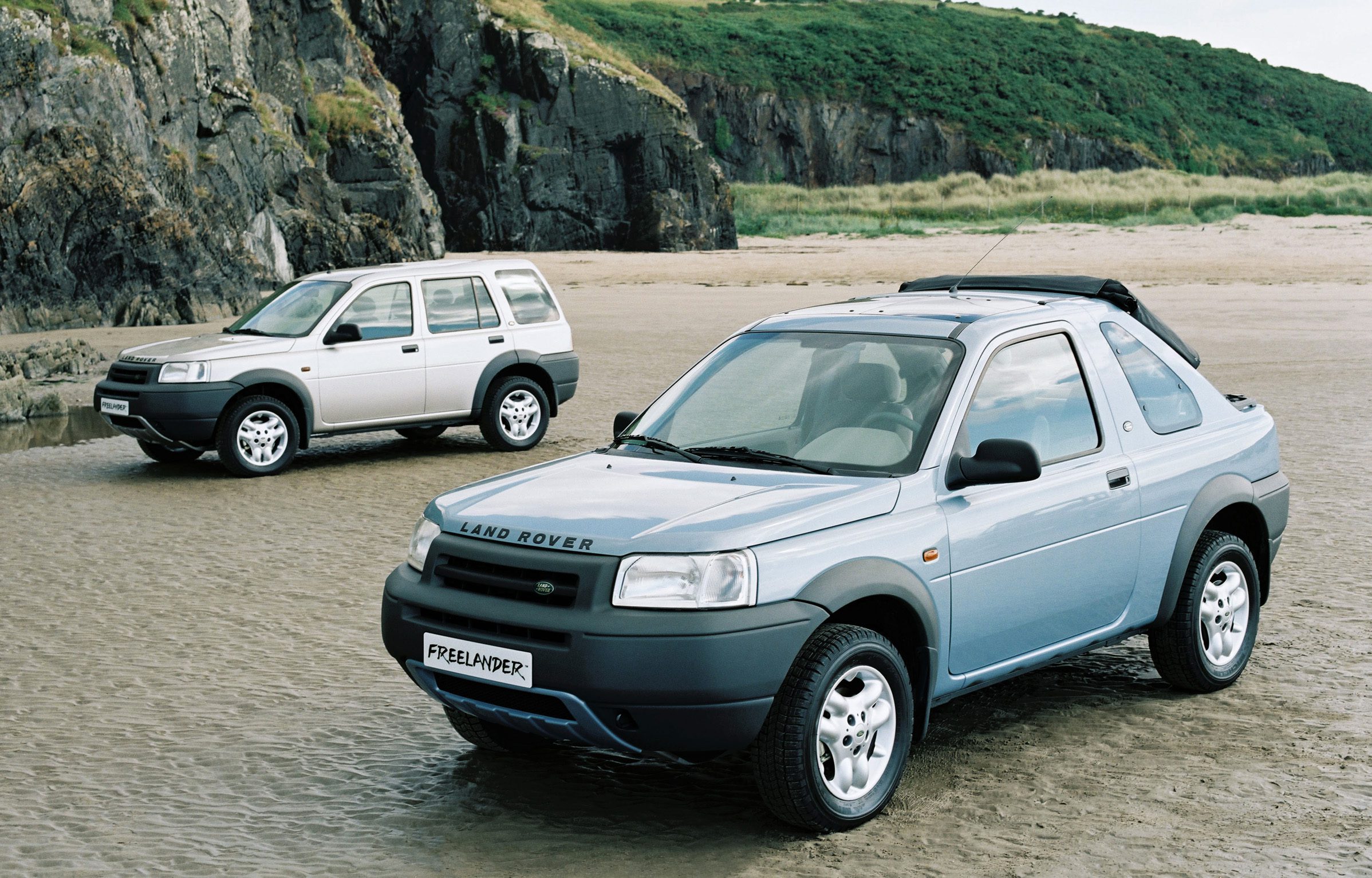FUJI CABIN
A Japanese microcar from the late 50s
Fuji Cabin (1957-58): The Fuji Cabin is a three wheeled microcar produced by Fuji Toshuda Motors of Tokyo, Japan, from 1957 to 1958. It was introduced at the Tokyo Motor Show in 1955.
In my personal opinion I can say it is one of the cutest microcars ever made.
With Japan in a mess in the wake of World War 2, many companies scrambled for survival. In March 1946 the car making division of the Diesel Automobile Manufacturing Company was divided into Hino truck and Isuzu car manufacturing businesses. The aviation division became Hitachi Aviation, but developing new aviation technology was strictly forbidden by the Allies, as it was considered a war industry. So Hitachi Aviation, as well as other aircraft companies, tried to survive in non war related industries.
Hitachi subsequently changed its name to the Tokyo Gas and Electric Manufacturing Company which, in 1952, began producing 60cc engines for motorbikes and had established itself as an engine producer of mainly small two-stroke engines. It merged with Fuji Automobile and together they built their own motorcycles under the names of Fuji Motor and Gasuden FMC. They also supplied engines to other motorcycle makers, such as Miyata, Zebra, Yamaguchi, Hikari, and Lucky. A decision was soon made to produce a scooter with full weather protection or in other words, a small car or microcar.
Ryuichi Tomiya incharge of body design at Nissan before the war was commissioned to design the car. After the war he was responsible for the design of the Suminoe Flying Feather for Suminoe Manufacturing, of which 150 examples were built between 1954-1955. His work was appraised & highly respected, he was also known as ‘Leonardo da Vinci of Japan’.
Tomiya’s masterpiece was the Fuji Cabin, which made its debut at the 1955 Tokyo Motor Show. It was a beautifully streamlined two-seater three wheeled coupé, and it was powered by a Gasuden scooter engine with kick start. It featured monocoque construction, strengthened by a full length tunnel bringing cool air to the engine. There are two beetle wing lids providing access to the engine and allowing the exhaust gases to exit. Initially there was only a single door on the left, but later cars got two doors.
As seen on the pictures Fuji Cabin appears to have been designed to be driven only by the tiny models seen in the company’s publicity pictures, as the car’s interior looks cramped.
It has a rack and pinion steering which is controlled by a set of handlebars that were placed far too close to the driver’s seat for comfort, while the small but well-engineered transmission incorporated a reverse gear, something we haven’t seen in the Peel P50 and other microcars of the era.
The front wheels were independently sprung on rubber, and the rear was on a swing arm with a coil strut. A single centrally placed headlamp graced the Complementing the Cabin’s curvaceous nose is a single headlamp placed in centre like we have seen on the Tucker 48 (aka the Tin Goose). But in the Tucker the central headlamp were used as cornering lights as the light used to turn in the direction of the front wheels., I’m not sure in the Fuji Cabin the headlamp used to turn with the steering system or not.
The Fuji Cabin was generally a high quality product as claimed by Fuji with a feeling of solidity to its structure, helped by a coat of dense insulation material which was sprayed inside the cabin roof, dashboard, and sides. However, Fuji didn’t have any experience of working with glassfibre and the quality of the Cabin bodyshells was quite poor as a result. The Fuji Cabin was quite expensive with a $650 price tag back in 1957. It was only $160 more than a 250cc Honda Dream motorbike, while a 22cc Rabbit Scooter from Fuji Heavy Industries was a comparatively costly at $450 although the Cabin offered significantly more comfort and usability.
The Cabin was powered by an air-cooled single cylinder 2 stroke 121.7cc Gasuden engine mounted on the rear axle mated to a 3 speed manual transmission sending power to rear wheels producing 5.5BHP with a top speed 37 mph (60 km/h).
Fuji Motors planned to build as many as 400-500 Fuji Cabins per month, just 85 were made in all, in a production run that lasted from 1957-1958. The short production run was partly because of the poor quality bodyshells, partly because of the price and because Fuji had no experience of marketing. As a result hardly anybody knew that it existed people still don’t as out of those 85 cars a handful have survived. Some say that only 3 Fuji Cabins have made it this far.
Recommend0 recommendationsPublished in Opinion